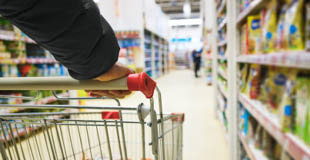Key Findings
- Kohl’s has a publicly available safer chemicals policy and beyond restricted substance list (BRSL) that it also uses as a limited manufacturing restricted substance list (MRSL) that provides restrictions for its private-label and direct import products going beyond regulatory requirements. The retailer has integrated the management of the policy within its relatively robust systems for social and environmental monitoring.
- Kohl’s reported success in expanding third-party certification of private-label textiles, including towels and sheets.
Recommendations for Kohl’s
- Kohl’s can make progress by setting public quantifiable goals with clear timelines for reducing and eliminating chemicals of high concern (CHCs).
- We urge the company to eliminate and safely replace any per- and polyfluoroalkyl substances (PFAS), toxic flame retardants, and phthalates that may be in the products it sells. The company should also eliminate plastics of environmental health concern (PEHCs) from its products and packaging materials according to public quantifiable goals with clear timelines. Kohl’s should publicly disclose the alternatives used to replace CHCs or PEHCs after eliminating them.
- The company should become a signatory to the Chemical Footprint Project and pilot it with key private label suppliers.
Grade History
How does Kohl's compare to its competitors?
Analysis of Kohl’s
Oversight: Established management responsibilities and incentives
Disclosure: Requires suppliers to report use of chemicals in products to retailer
Action: Reduced or eliminated chemicals of high concern (CHCs) or plastics of environmental health concern (PEHCs) within the last three years
Safer Alternatives: Evaluates safer alternatives, avoids regrettable substitutes
Transparency: Demonstrates a commitment to transparency and public disclosure
Third-party Standards: Promotes credible third-party standards for safer products
Extra Credit:
Joint Announcement: Public commitment demonstrated through joint announcement
Continuous Improvement: Shows continuous improvement by steadily expanding safer chemicals policy
Collaboration: Actively participates in collaborative process to promote safer chemicals
Impact Investment: Investing financial resources into independent research into safer alternatives and/or green chemistry solutions


